
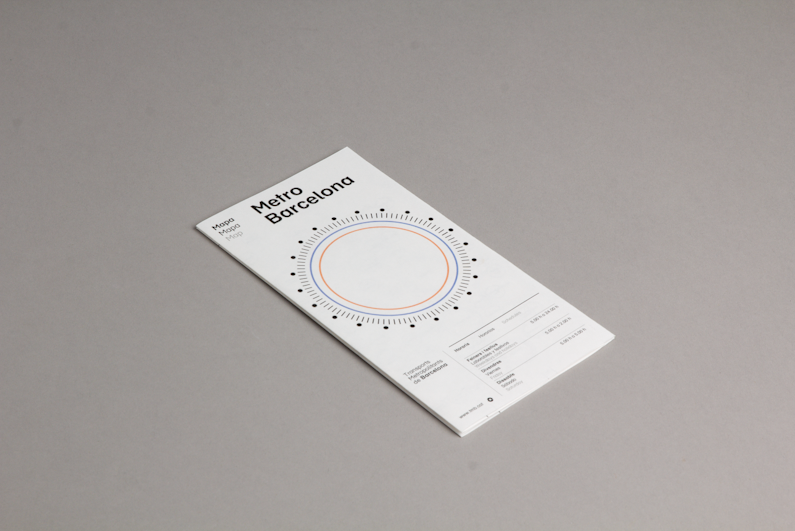

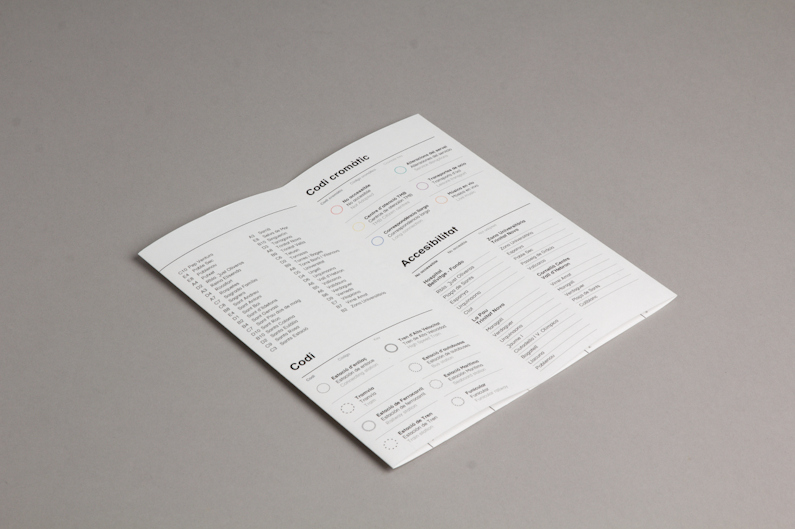
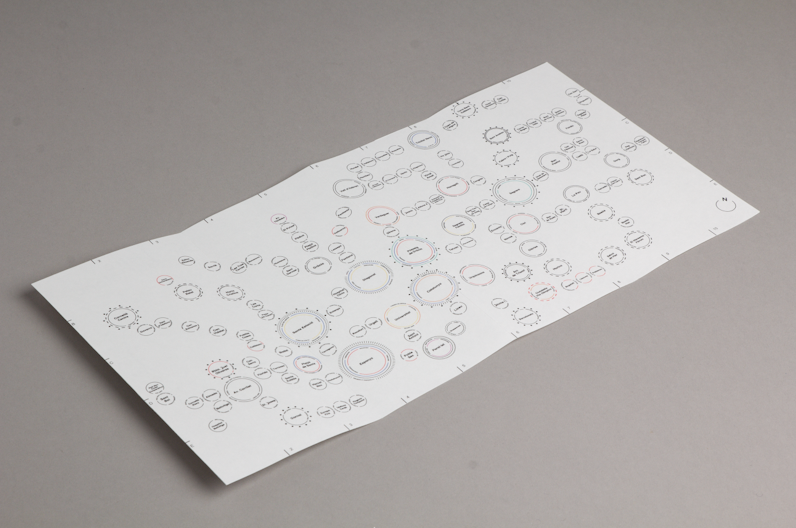
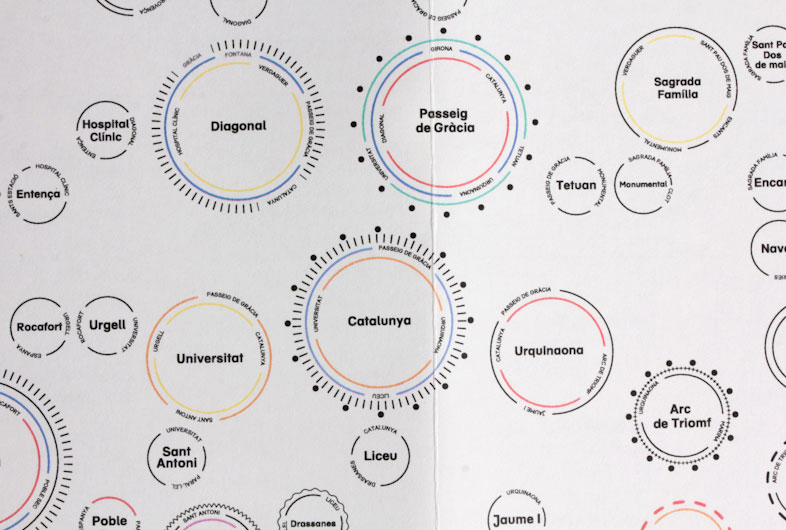
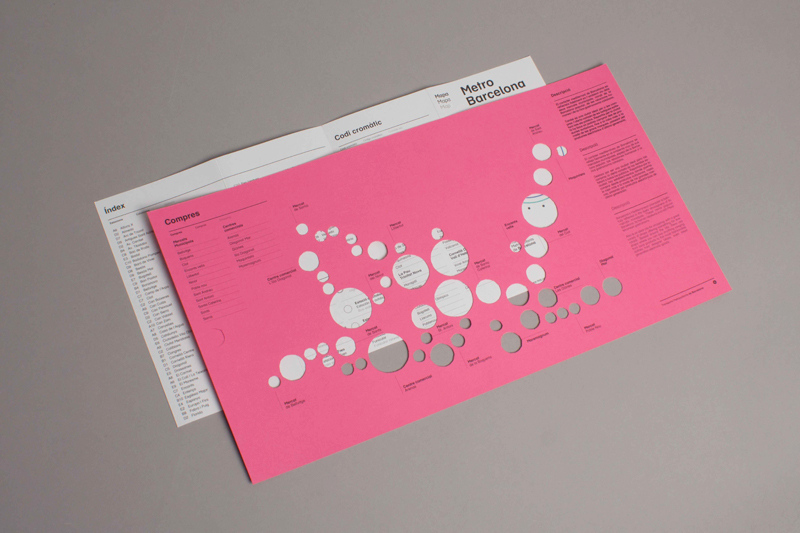
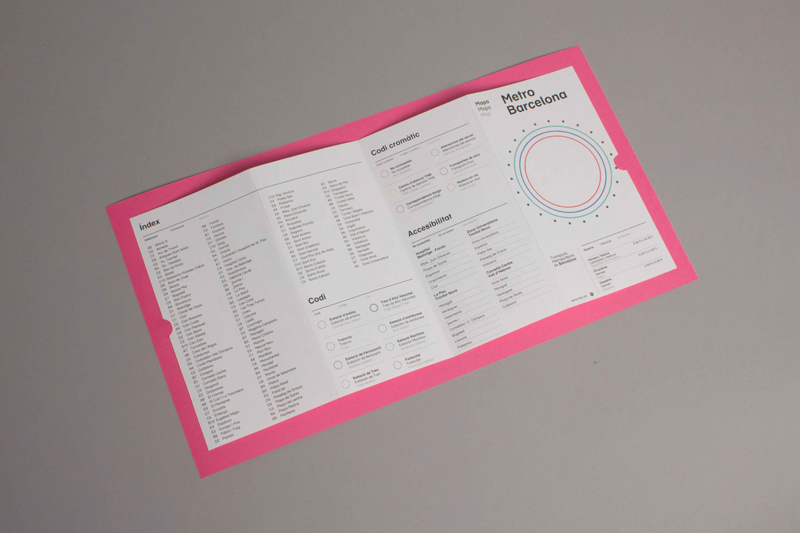
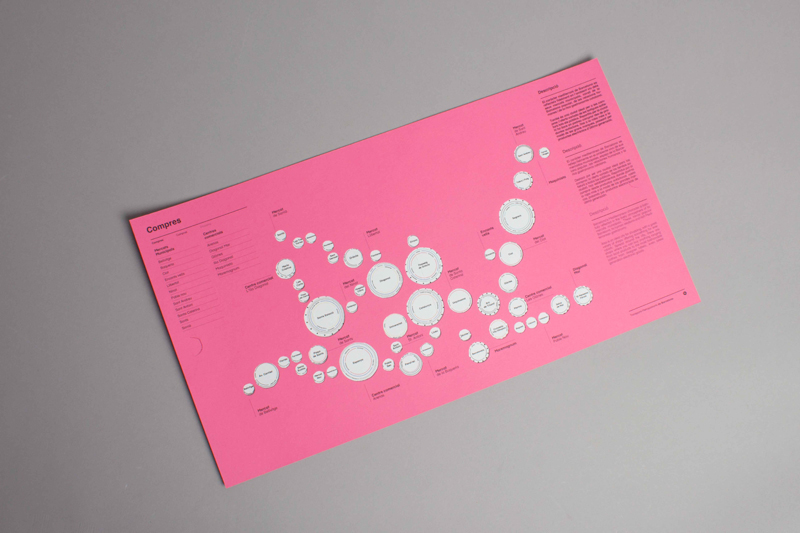
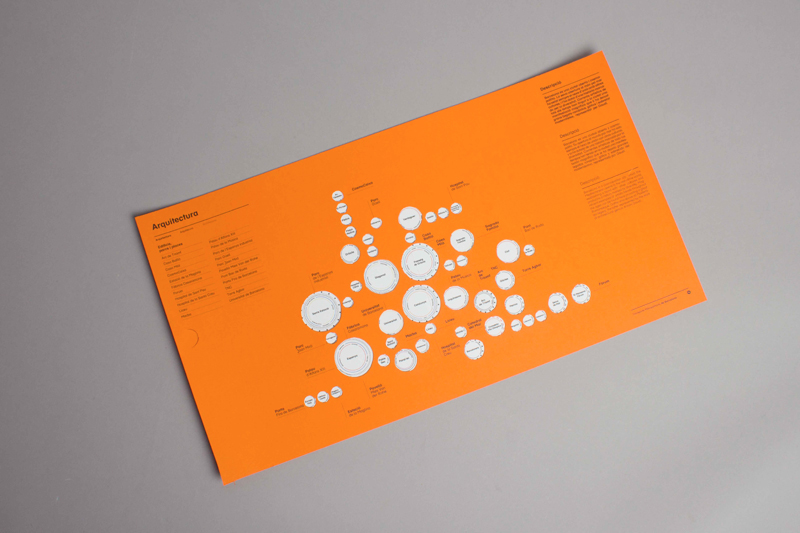
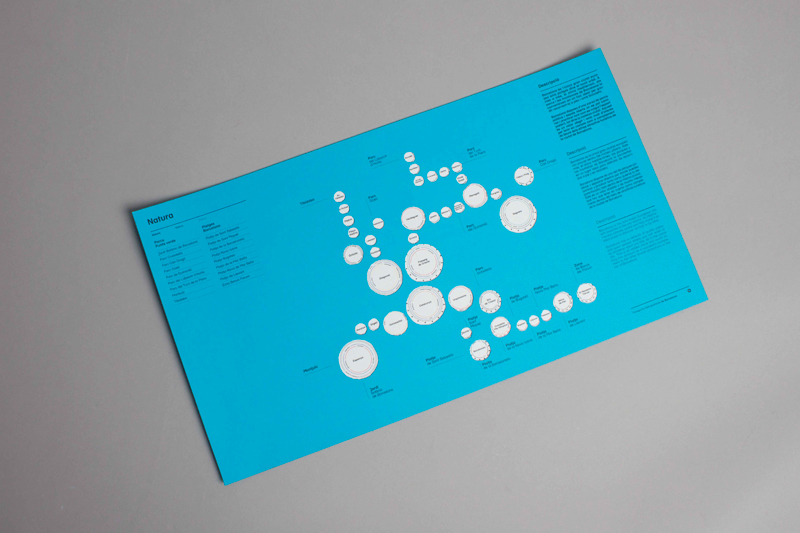
This project tries to find a connection between cognitive neurocience and design. Has been solved with a new graphical representation of the underground map according to the new model of connexionist information processing, developed by David E. Rumelhart and James L. McClelland, called also Parallel Distributed Processing
Conceived the brain as a connectionist, we reach the idea of a no linel design and dinamic. The resultant map is not subdue to a underground tour -as seen on the city maps-, but to the users route and all the connections he can do. The first mtivation of the project is to obtain another point of view of the actual underground map.
Following this proposal, I designed a grid based in circles that show the number of connexions that every stop can have. So, if a stop has one circle, means that there are one or two directions. In case of three circles, three directions, in four circles, four directions and five means five or more. Besides the dimension, also shows, in other concentric circles, the number of diferent directions the user can go.
The advantage of the circle is, having no vertices, doesen’t show any direction. This fact helps the underground stop can be placed in the real place of the map and hepls the user find the real direction to the next stop.
